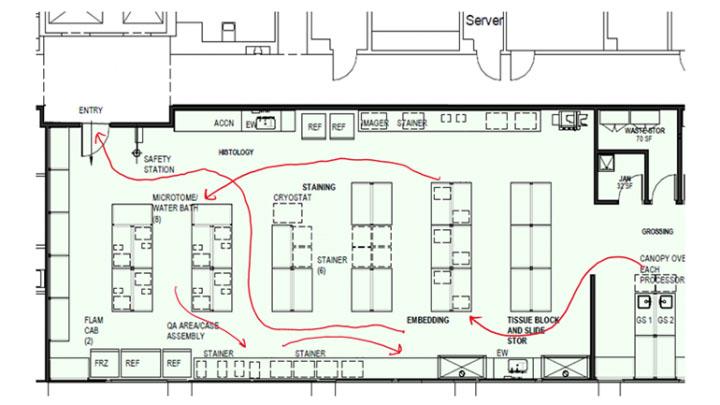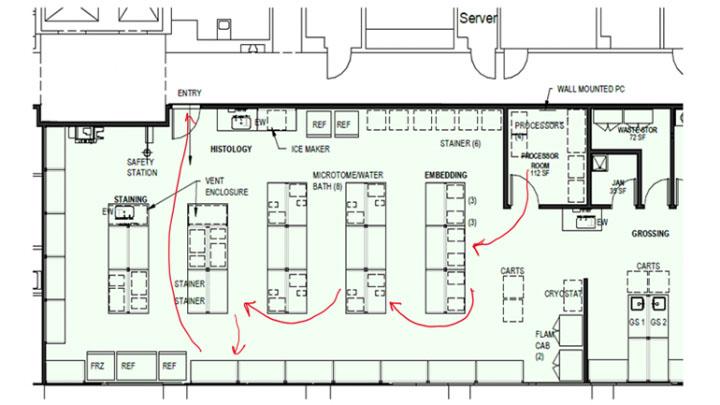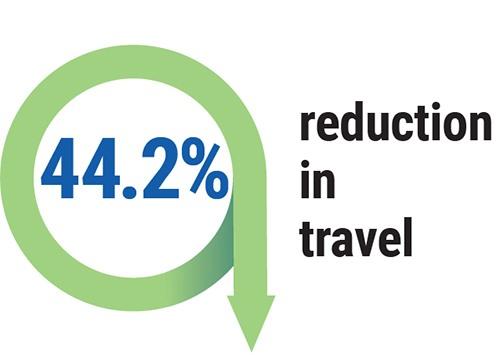
Optimizing Process Workflow Through Layout Redesign
The Leica Biosystems Content and Evidence team has partnered with a private, non-profit, integrated health system to optimize their new laboratory layout to ensure efficient process flow. The laboratory is most interested in ensuring their new laboratory space is structured to best handle the initial volume while allowing for increased growth over the coming years. The new histology laboratory will include routine, special, and immunohistochemistry staining.
The Leica Biosystems Content and Evidence team was provided an initial architect drawing with planned equipment placement. The team conducted interviews with lab directors, and staff to obtain all necessary input on process requirements. The Leica Biosystems Content and Evidence team mapped the process flow and redesigned the layout to rearrange the placement of process steps and equipment. Below is the initial layout provided to the team and the recommended layout after adjustments.


The new laboratory space included space for:
- Separate room for 4 tissue processors and waste storage
- 3 Embedding stations with room for 6 total stations
- 8 Microtomy stations with room for 12 total stations
- Dedicated island for routine staining
- Dedicated island for special staining including hood for hand stains
- Large area for Immunohistochemistry preparations and staining
- Large workspace for Case Assembly and distribution of slides
- Wall space for storage of blocks and slides

The estimated travel distance for the specimen of the initial drawing was 143.2 feet and included two crossover process steps. The recommended layout eliminated all crossover process steps and had an estimated travel distance for the specimen of only 79.9 feet. That is a 44.2% reduction in wasted travel distance. The Leica Biosystems Content and Evidence team was able to visually demonstrate the improvements using a spaghetti mapping process which resulted in the necessary gains.
Projections and Realized Results are specific to the institution where they were obtained and may not reflect the results achievable at other institutions.
Leica Biosystems content is subject to the Leica Biosystems website terms of use, available at: Legal Notice. The content, including webinars, training presentations and related materials is intended to provide general information regarding particular subjects of interest to health care professionals and is not intended to be, and should not be construed as, medical, regulatory or legal advice. The views and opinions expressed in any third-party content reflect the personal views and opinions of the speaker(s)/author(s) and do not necessarily represent or reflect the views or opinions of Leica Biosystems, its employees or agents. Any links contained in the content which provides access to third party resources or content is provided for convenience only.
For the use of any product, the applicable product documentation, including information guides, inserts and operation manuals should be consulted.
Copyright © 2024 Leica Biosystems division of Leica Microsystems, Inc. and its Leica Biosystems affiliates. All rights reserved. LEICA and the Leica Logo are registered trademarks of Leica Microsystems IR GmbH.